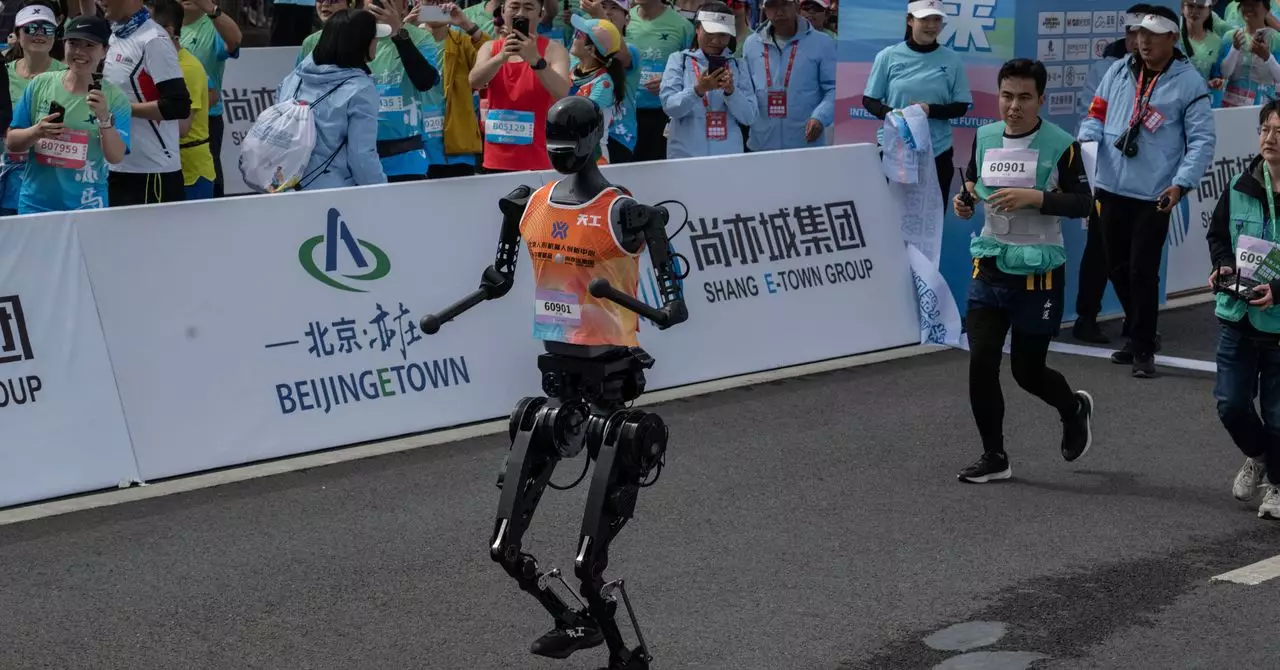Humanoid robots often captivate audiences with their charming displays of personality, whether through dancing, playing sports, or mimicking human interactions. However, as robotics expert Fern articulately points out, these performances don’t serve to highlight their true utility in real-world applications. The entertaining spectacle of these capabilities can distract from the more significant questions of functionality and adaptability that should anchor our understanding of these robots. Rather than fixating on benchmarks like the ability to perform physical feats, the focus should shift to how these robots can execute a range of practical tasks independently without requiring a detailed, step-by-step instruction manual.
As the world progresses, it’s not just about how advanced these humanoid robots appear; it’s about their effectiveness in addressing human needs and challenges. The probable shift in China’s approach towards prioritizing utility over mere performance indicators must be embraced. Audiences may soon tire of the ostentatious displays, prompting a revival of interest in robots that can genuinely assist human endeavors.
Diversity in Design: A Race of Innovation
A recent competition showcased a variety of robots, each designed with distinct characteristics that reflected the companies’ strategies. Among the participants was a pint-sized model, only 2 feet and 5 inches tall, adorned in a playful blue and white outfit, likely capturing the crowd’s hearts. A standout contender, Tiangong Ultra, standing at five feet nine inches, took the crown. The race was intriguing not merely for its results but for the innovative designs and creative problem-solving strategies exhibited by the robots’ creators.
All participants were bipedal, necessitating a level of engineering prowess that allowed them to navigate the course in an upright position. This paves the way for discussions regarding not just aesthetics but also the potential for versatile and multi-functional robotics. The various adaptations, such as attaching sneakers or modifying limbs for better balance, sparked an ongoing dialogue about innovation within the field.
The Dark Side of Humanoid Performance
Despite the thrilling atmosphere of the competition, many robots displayed comical failures that raised eyebrows rather than accolades. Take Huanhuan, for example, whose sluggish, unpredictable movements culminated in a display of chaos and absurdity that rendered its human-like visage meaningless in terms of function. Observers were left wondering what the purpose of such an elaborate design was if it couldn’t perform basic mobility.
Conversely, while Shennong was meant to be a marvel of robotics with its bizarre aesthetic resembling a mechanical monster, it quickly devolved into a spectacle of failure, twirling uncontrollably and taking its operators down with it. Such scenes unfold not as displays of technological triumph but rather as poignant reminders of the myriad challenges still faced in perfecting humanoid robotics.
Human Intervention: A Necessary Companion
It became glaringly evident throughout the race that the role humans play in assisting these robots is indispensable. Oftentimes, operators resorted to using duct tape—an humble yet effective tool—to address mechanical failures on the spot. This starkly highlighted the limitations of the robots themselves. They cannot yet function autonomously or efficiently without real-time assistance. In many cases, these robots looked more like remote-controlled toys rather than sophisticated machines capable of independent thought or action.
Being tethered to their human guides, the robots lacked agency, prompting deeper reflections on their future applications. If humanoid robots are to transition from novelty acts to valuable assets in society, they need to evolve beyond being reliant on human intervention. Rethinking design and functionality to lessen this dependency will be essential for the technology to thrive.
Evolving Perspectives on Robotics
What’s clear from the race is the duality within the field of humanoid robotics. On one hand, there’s the spectacle of achievements that induces wonderment, and on another, there’s the recognition of the disillusionment stemming from inadequate performance. This paradox beckons for a critical reassessment of what progress should actually look like in robotics.
With the ever-increasing demand for automation across various industries, the urge to push boundaries should focus on real-world problem-solving capabilities rather than dazzling displays. As robots evolve, the dialogue around their functionalities must also pivot, ensuring we prioritize meaningful advancements that tangibly benefit society rather than fleeting entertainment value. Robotics should reflect the essence of collaboration between technology and humanity, fostering solutions that serve to enhance life rather than serve as mere novelties.

